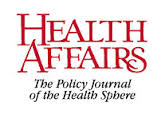Pennsylvania Health Law Project Newsletter
The Pennsylvania Health Law Project has published its October 2016 newsletter.
 Included in this edition are stories about problems older adults are encountering when they seek to enroll in the state’s Aging Waiver program; an update on the implementation of Community HealthChoices, the new state program of managed long-term services and supports for qualified seniors; upcoming Medicare changes and enrollment and application deadlines; coverage of diabetes testing supplies for dual eligibles; new state guidelines addressing access to treatment for mental health conditions and substance abuse disorders; and more.
Included in this edition are stories about problems older adults are encountering when they seek to enroll in the state’s Aging Waiver program; an update on the implementation of Community HealthChoices, the new state program of managed long-term services and supports for qualified seniors; upcoming Medicare changes and enrollment and application deadlines; coverage of diabetes testing supplies for dual eligibles; new state guidelines addressing access to treatment for mental health conditions and substance abuse disorders; and more.
Go here for the latest edition of PA Health Law News.
 According to the new numbers, which cover hospital performance from January 1 through September 30 of 2015, hospital mortality rates fell for ten of the 16 conditions PHC4 tracks while readmissions fell for nine of the 13 conditions for which the agency collects data.
According to the new numbers, which cover hospital performance from January 1 through September 30 of 2015, hospital mortality rates fell for ten of the 16 conditions PHC4 tracks while readmissions fell for nine of the 13 conditions for which the agency collects data. Since that time the state’s Medicaid expansion has added 670,000 Pennsylvanians to the ranks of the insured, with others purchasing insurance through the federal health insurance marketplace.
Since that time the state’s Medicaid expansion has added 670,000 Pennsylvanians to the ranks of the insured, with others purchasing insurance through the federal health insurance marketplace.

 Further, the study suggests,
Further, the study suggests,
